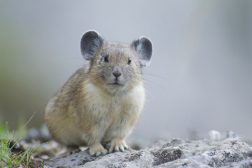Definition
noun
An immunoglobulin (antibody) that is characterized by its α-heavy chain, and its prevalence in mucous secretions (e.g. tears, sweat, colostrum, etc.) where it provides local immunity against infections
Supplement
The plasma cell produces immunoglobulins (or antibodies) as an immune response to an antigen, i.e. non-self agent. An immunoglobulin (Ig) is a glycoprotein with a Y-shape. The basic structure of a monomeric unit of antibody consists of two identical heavy chains and two identical light chains. In each of these chains, there are variable and constant regions. The immunoglobulin heavy chain, in particular, is the large polypeptide subunit. It can be used to classify the various isotypes (or classes) of immunoglobulins. In humans and other mammals, the five classes are: (1) immunoglobulin A (IgA), (2) immunoglobulin D (IgD), (3) immunoglobulin E (IgE), (4) immunoglobulin G (IgG), and (5) immunoglobulin M (IgM). The immunoglobulin A (IgA) has α (alpha)-type of immunoglobulin heavy chain (thus, the acronym A). The light chain of IgA may either be kappa or lambda. Its molecular formula is (α2 κ2)n or (α2λ2)n. In humans, IgAs are of two main subclasses: IgA1 and IgA2.
IgA occurs as monomer, dimer, trimer, or tetramer. However, the most prevalent form is a dimer. A dimeric IgA would have two functional units of antibody joined by a short J chain. A dimeric IgA is referred to as secretory IgA (sigA). sigAs are the major type of immunoglobulin present in tears, saliva, colostrum, sweat, and other mucous secretions, e.g. in gastrointestinal tract. sigAs are resistant to digestion, and thus, they are capable of providing local immunity in the gut. Unlike IgG, IgA is not capable of crossing the placenta.
IgA also occurs in serum and is referred to as serum IgA. In the serum, IgA interacts with FcαRI (one of the Fc receptors expressed on an immune effector cell), consequently initiating inflammatory reactions.
Abbreviation/Acronym:
- IgA
See also:







